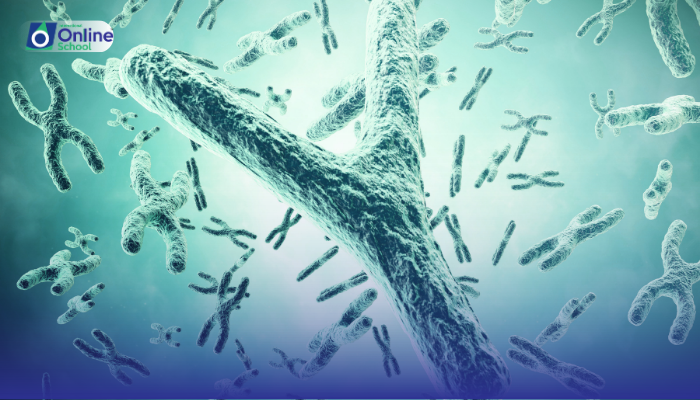
Learning Outcomes:
i. Identify and label the key components of a chromosome.
ii. Explain the organization and function of different chromosomal structures.
iii. Appreciate the intricate packaging and regulation of genetic material.
iv. Recognize the connection between chromosomal structure and cellular processes.
Introduction:
Imagine a microscopic treasure map, holding the instructions for building and running every cell in your body. This map is not drawn on paper, but woven from threads of DNA tightly packed into structures called chromosomes. Today, we embark on a journey to annotate this intricate blueprint, deciphering the components and organization that make chromosomes the guardians of our genetic information.
i. Unveiling the Packing Powerhouse: Chromatin and Histones:
Our journey begins with the basic building block of chromosomes – chromatin. Think of it as beads on a string, where the beads are DNA molecules and the string is formed by proteins called histones. These histones fold and compact the long DNA strand, fitting it into the tiny confines of the nucleus. This intricate packing allows for efficient storage and controlled access to genetic information.
ii. The Landmark: The Centromere:
Imagine a sturdy clasp holding the two halves of a chromosome together. This vital point is called the centromere. It serves as the attachment point for spindle fibers during cell division, ensuring the accurate segregation of genetic material to daughter cells. The position of the centromere also determines the chromosome's shape and plays a crucial role in gene expression.
iii. The Protective Caps: Telomeres:
Think of telomeres as the caps at the ends of chromosomes, safeguarding the precious genetic material within. These specialized DNA sequences prevent chromosomes from sticking together and ensure their stability during cell division. With each cell division, telomeres shorten slightly, acting like a biological clock that ultimately limits our lifespan.
iv. The Unwinding Spools: Chromatids and Sister Chromatids:
As a cell prepares to divide, the DNA in each chromosome replicates, forming two identical copies called sister chromatids. These chromatids remain attached at the centromere, resembling an X-shaped structure. During cell division, the sister chromatids separate, ensuring each daughter cell receives a complete set of chromosomes.
v. The Regulatory Landscape: Heterochromatin and Euchromatin:
Chromatin isn't just a passive packaging material. Different regions of chromatin can be tightly packed (heterochromatin) or loosely organized (euchromatin). This packing influences gene expression, with heterochromatin generally silencing genes and euchromatin allowing for active transcription. Understanding these differences helps us appreciate the intricate regulation of genetic information within cells.
Annotating the structure of a chromosome is like deciphering a secret code. Each component – from the packing histones to the protective telomeres – plays a vital role in safeguarding and transmitting our genetic blueprint. By appreciating this intricate architecture, we gain a deeper understanding of how cells function, how traits are inherited, and even how aging and diseases can arise. This knowledge paves the way for future advancements in genetics and medicine, allowing us to rewrite the story of our own lives, one chromosome at a time.